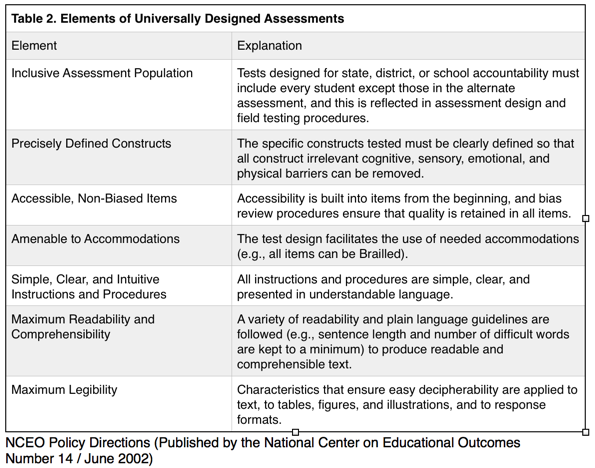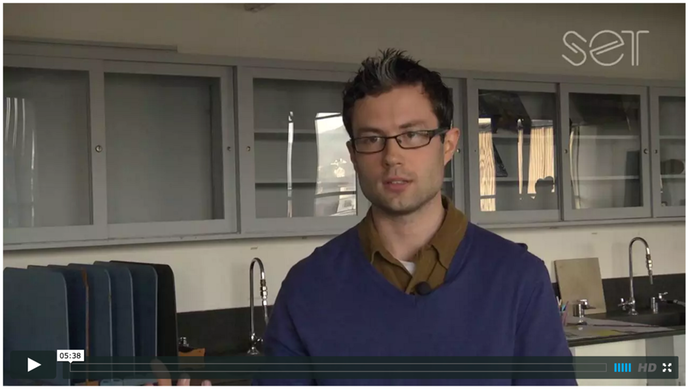Summative assessment, similar to formative assessment, is a process. It is used to infer the level of individual student learning related to the mastery of specific content standards. Products like essays, projects and tests, and processes such as observations and conferences are some common tools used to gather the evidence needed for teachers to be able to infer mastery.
When summative assessment is designed within the UDL framework, student data is gathered using a variety of materials and methods, both when presenting assessment information to students and when students show what they know. In strong UDL classrooms a variety of formative and summative assessments are used by the learner throughout the learning cycle. (UDL-IRN Critical Elements, 2013)
UDL assessments are also free of unnecessary requirements that interfere with the student’s ability to demonstrate content knowledge. For example, good UDL science or social studies assessments use simple directions or offer a text to speech option so that test items can be read aloud, thereby reducing reading barriers so students can focus on the science or social studies content being assessed. Removing performance barriers while maintaining the relevant construct of the content is a hallmark of UDL assessment.
UDL Summative Assessment: Guidelines
Multiple Means of Representation
- Provide digital formats of assessments (allows text to be manipulated, text-to-speech software to be used)
- Allow students to utilize resources (ex. “open-book” assessment)
- Simplify directions
- Clarify vocabulary and symbols
- Illustrate through multimedia
Action and Expression
- Allow alternatives to traditional assessments and quizzes for students to express or demonstrate their learning (written and oral assessments, recorded responses, illustrations, diagrams, etc.)
- Provide clear expectations and feedback
- Provide assessment embedded in the learning activities
- Include an explicit description (rubric) of the criteria for quality work
- Provide support for sustaining effort
- Provide checklists and project planning templates for understanding the problem, setting up prioritization, sequences, and schedules of steps
Multiple Means of Engagement
- Offer choices of assessment related to topic and presentation mode
- Provide adjustable levels of challenge in type of assessments provided
- Provide authentic, task based assessment
- Reduce threat by removing time testing constraints
- Reduce emphasis on grades
ar expectations an
Beyond Quizzes and Exams: Performance Tasks
Social Studies: Assessing 21st Century Skills with Library of Congress Documents
http://beyondthebubble.stanford.edu
Science:
Performance Assessment Links in Sciences
The Concord Consortium
http://concord.org/
Finding Alternate Tools to Support Summative Assessment
High stakes assessment and UDL
d
back
Teachers talk about creating UDL assessments.

